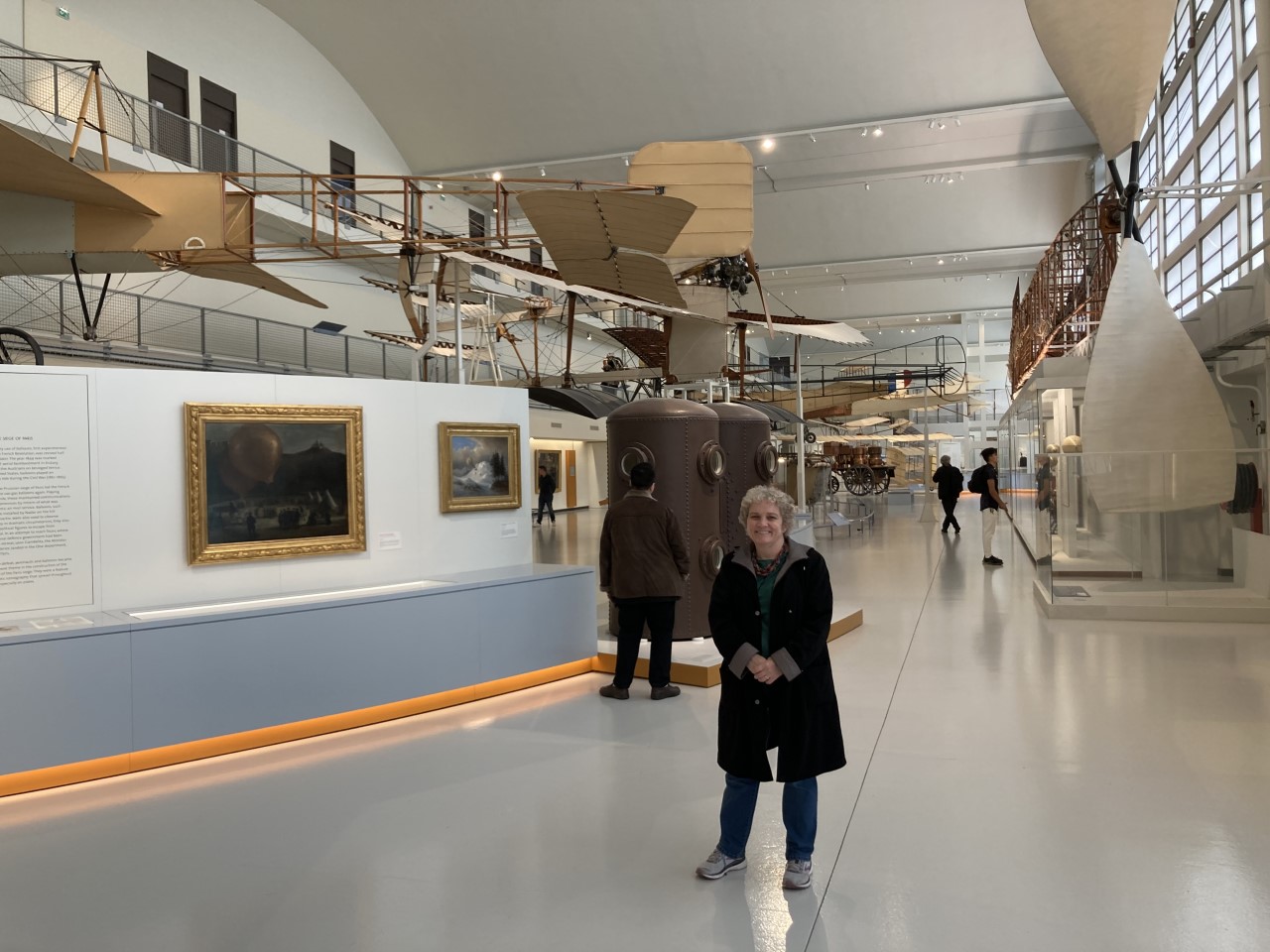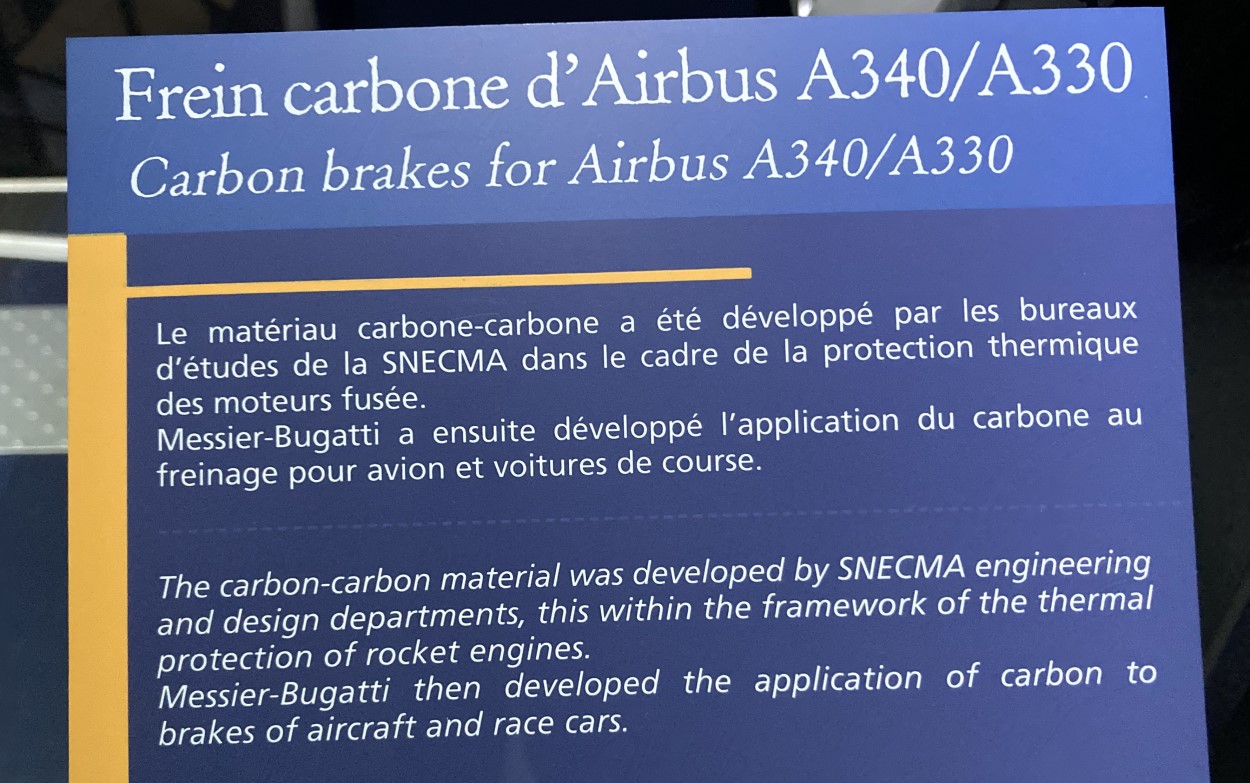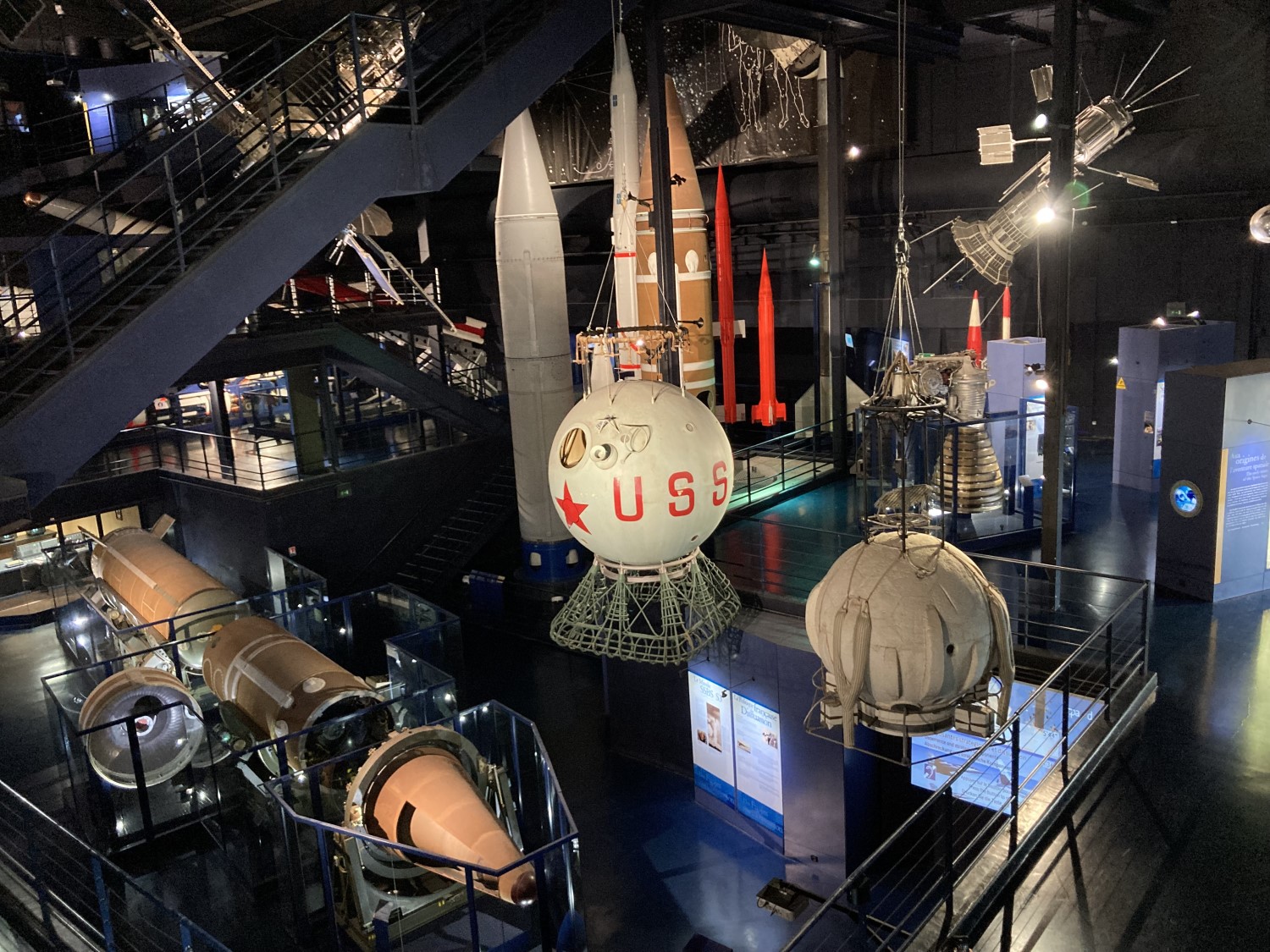My parents recently went to France, and the Fatherly One has agreed to review what is, for for those who did not study French: the Air and Space Museum

The Motherly One in the Pioneers of Aviation Hall1
One of the oldest aviation museums in the world, it is in the Le Bourget terminal opened in 1937. The museum is predominantly divided into sections by era with sections devoted to Pioneers of Aviation, the Great War, the Interwar era, WW II. Other areas are Space Exploration, Helicopters, Prototypes, the Cocarde Hall (French military aviation), the Children’s Area, a Library and the Concorde Hall. You could easily spend two days in this place if you were the type to read every placard and consider every exhibit. We (The Motherly One and I) did not view Helicopters, Prototypes, The Children’s Area (too old!), the Museum Library (prior permission needed) and the Cocarde hall as 5 hours on premises was enough! There is also an outside airpark with some tired looking examples of 1960s era Soviet aircraft and in another part of the airpark several examples of current French military and civilian aircraft.
An effort has been made to make this is an “international” museum. All the large signage is in French and English, and the new exhibits have German as well. Again, in the older exhibits the small placards are French, newer ones have English as well. Museum guides in paper are available in French, English and German. The website is available in English (well most of it), if needed just use Google to translate the French website to English. There is also an application you can download to your phone for additional information on certain items in the museum’s collection.

Bilingual Signage
Another treat was the café. No hot dogs, burgers and fries here, for 16 euros you are provided an authentic French déjeuner (lunch). Two small appetizers, a hot meal (I had white fish with squash) and two small desserts.
Items in the collection go back as far as the 16th century such as posters, literature, journals and builder’s documentation which are found in the library, the world’s first seaplane (Henri Fabre 1910), the nacelle of the airship La France (1884) and to modern era with 2 Concordes (prototype 001 and Air France F-BTSD), a Boeing 747 with the interior removed and the Dassault Mirage IV which dropped a live nuclear bomb in a test in 1966. It is best to cover the areas of the museum in time sequence up until WW II as this provide a good understanding of how aviation progressed in its first 60 years or so.
The Air Pioneers Hall is a wonder. Many of the artifacts are the original planes with typical restoration activities needed for planes of this vintage. I had always thought the US had the edge on aviation with the Wright Brothers, Glen Curtiss and others but we Americans were rather late to the party based on the artifacts and supporting information presented in this one hall.

The Space Exploration Hall
Another eye opener was the Space Exploration area. There were many artifacts from the USSR/Russian space exploration activities including a used Soviet T-6 capsule, displays related to the American Apollo efforts and information related to ESA activities. Again, a very international perspective not often found in the United States.
Though we did not get to enter the children’s area I don’t think I have seen a more well thought and engaging area for young people. Maybe I’ll have to take a grandchild there someday! The Motherly One noted this was the best aviation museum she has attended. High praise from the woman I and her children have drug around to all the major American museums and some tiny ones too.

One of the two Concordes on display
I recommend that, if possible, you add this museum to your itinerary if you are traveling to Paris. Do plan you transportation carefully, for us it was the subway, the above ground light rail and then a bus for out and back. We had purchased passes for all 5 zones in the Paris Metro system so there was no additional cost, but it was an interesting journey even on a Sunday.

Comments
I second the high praise for this museum. It is very much worth the time. 5 out of 5 rating on this is not an exaggeration...it is simply that good.
I little yes and a little no. The Wrights crushingly ahead of the world (both Europe and the rest of the Americans) in airfoil (wings/propellers) design and pratical flight experience. The French, ignorant of this, were trying to make their flawed designs work by putting a huge amount of effort into improved engines &c.
The Wrights were 5-10 years ahead of everybody else in 1908, mostly by virtue of having invented a three-axis flight control system that nobody else even realized they needed. In spite of all their airplanes always going out of control and crashing in about three minutes flat.
But in 1908, they finally came out of stealth mode and showed everyone how an airplane could be built (a few bee enthusiasts were let in on it in 1905). Everybody in the aeronautical world was then on the same page, ready for a round of massive inventiveness.
Unfortunately the Wrights turned out to excellent inventors but not so much industrialists. Which should have been an easy problem to solve, but the excellent American industrialist first out the gate with "I'm ready to found an airplane country" decided not to bother paying any of those pesky royalties to the Wrights.
So, ten years of massive inventiveness in Europe, ten years of patent litigation in the United States. Congress did eventually force the parties to make nice, I think on account of it being so embarrassing that American flyboys had to fly French planes all through WWI, and we got the Curtiss-Wright aircraft country out of it. And then a whole lot of other start-ups, but starting up behind the curve.